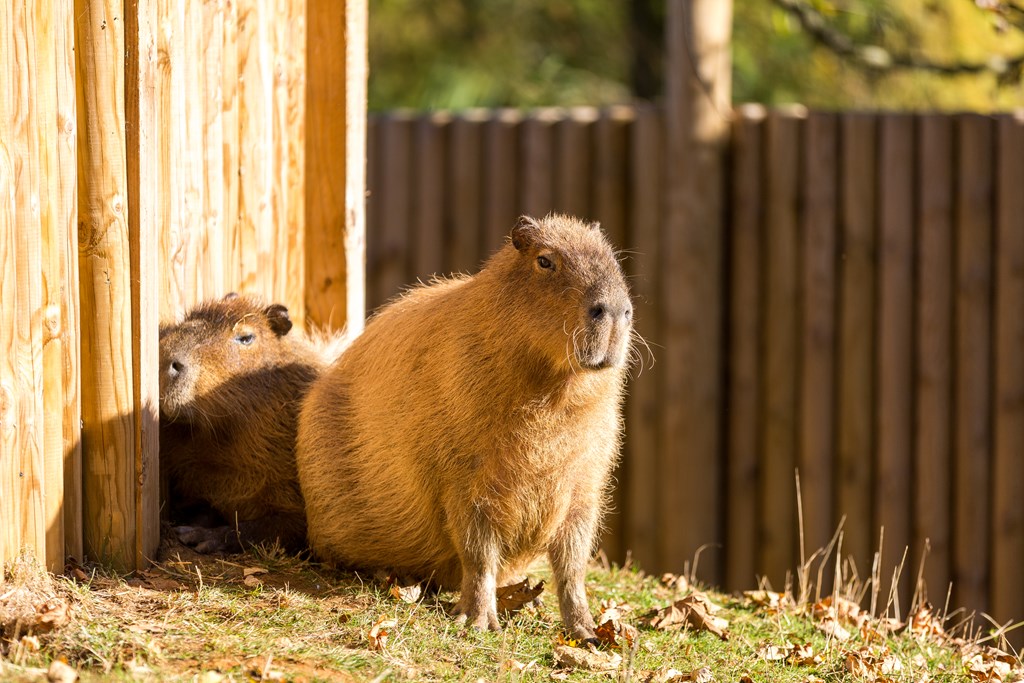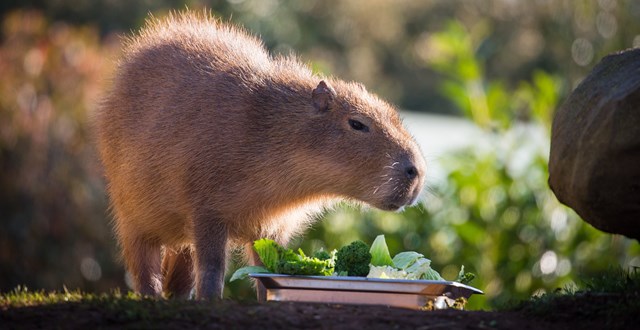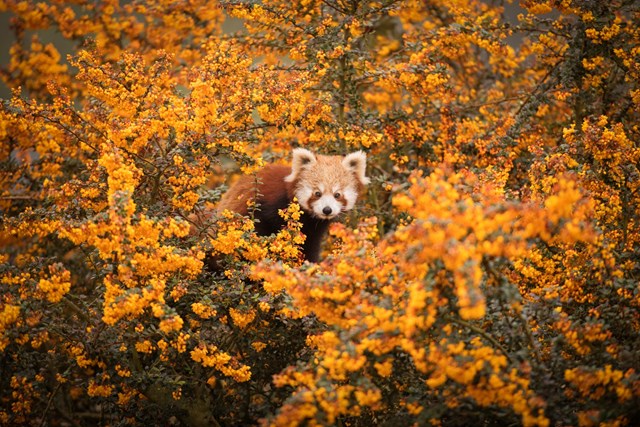Overview
Capybara are herbivores and mainly graze on grasses, aquatic plants, fruit and tree bark. They are very selective feeders and will often ignore multiple tree species while on the hunt for a specific one.

All about us
| Distribution: | South America |
|---|---|
| Habitat: | Savannahs, dense forests and areas near water |
| Height: | 50-60cm tall and up to 1.3m long as adults |
| Weight: | Up to 65kg |
| Gestation Period: | 130-150 days |
| Lifespan: | In captivity, they can live up to ten years. Four years in the wild. |
| Threats: | Destruction of habitat and deforestation |
About us
Scientific name: Hydrochoerus hydrochaeris
Capybara are the largest living rodent in the world and are closely related to the guinea pig and rock cavies.

Capybara are large rodents, native to South America. As they are semi-aquatic, these animals have webbed toes to aid them in the water.
Males can grow to weigh up to 65kg as adults, however the females will tend to weigh more. Capybara have a scent gland on their nose called a 'morillo'. This is always visible on males and becomes more prominent on females during oestrous.
Capybara are herbivores and will mainly graze on grasses, aquatic plants, fruit and tree bark.
Capybara are gregarious and will often be found living in groups of around 20 individuals.
Alloparenting (parenting by non-related members of a group) has also been observed in this species.
The water pool in the capybara enclosure allows the animals to take a swim, which suits their semi-aquatic lifestyle. Their webbed feet make them agile in the water.
Destruction of habitat and deforestation, as well as hunting for meat and pelt are the biggest threats facing capybara in the wild. The IUCN has listed this species as 'Least Concern'.
Capybara will only mate in water, with their gestation lasting between 130-150 days. A litter will contain, on average, four young.
As with many other rodents, a capybara's front and cheek teeth will continuously grow throughout their lives.
Capybara are able to hold their breath underwater for up to five minutes.

